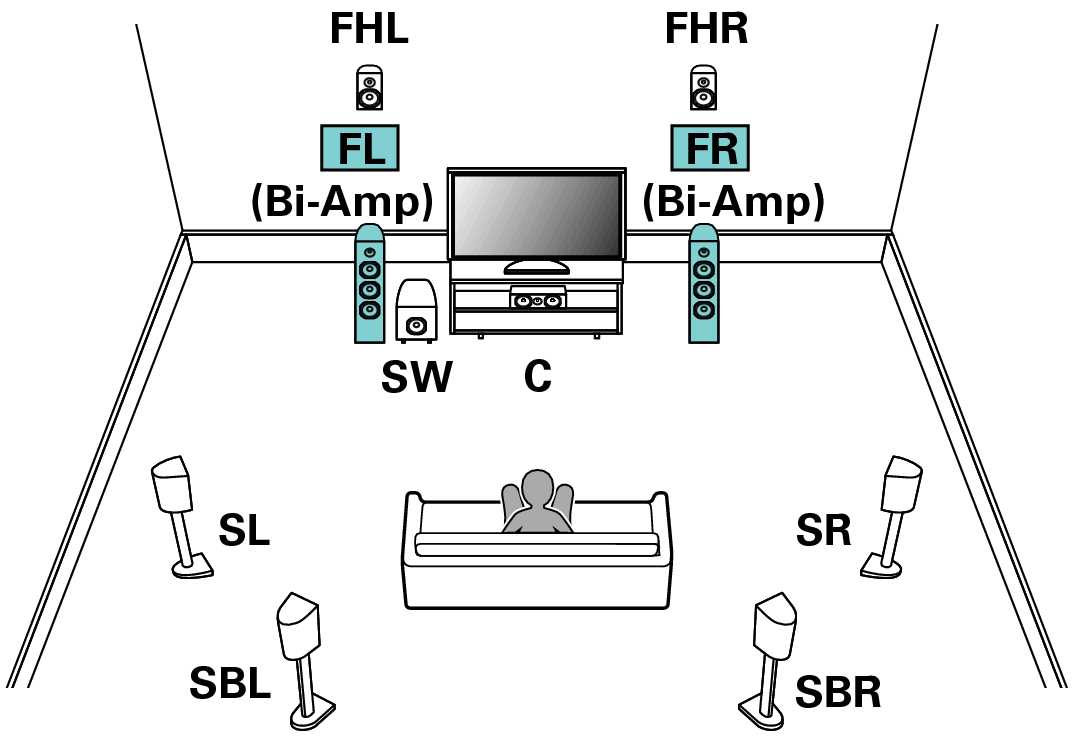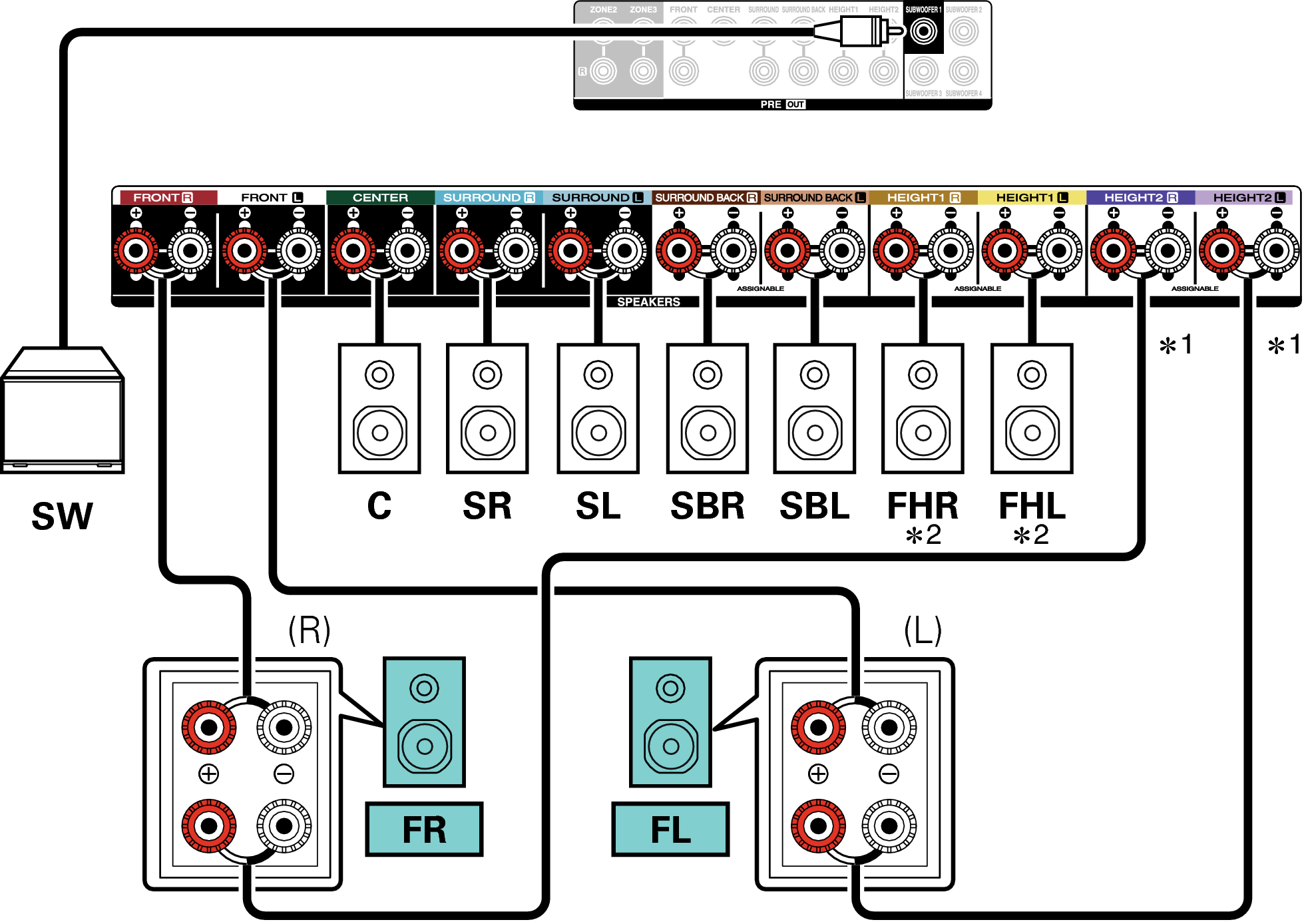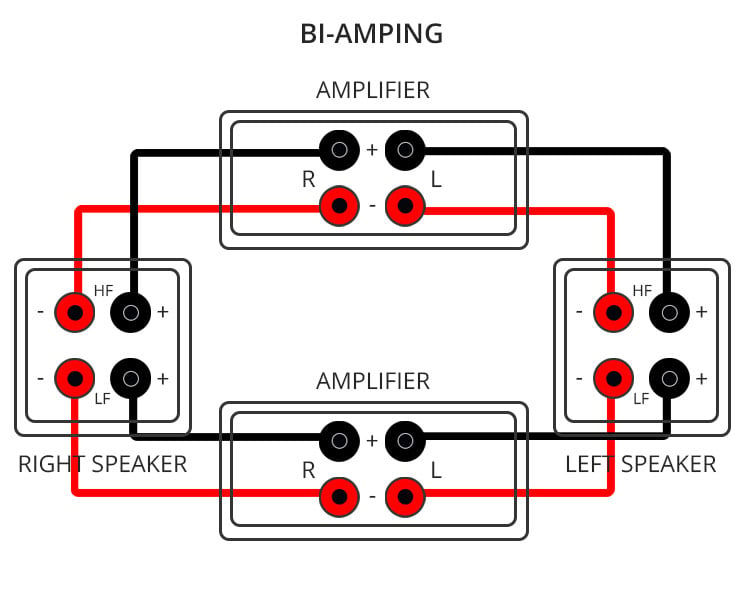Based on this diagram in the manual, it suggests that I can connect 9 speakers with the Front L/R able to bi-amped (for better cross overs), and the unit will automatically switch to power the height speakers if they are detected to be used "When you connect speakers for 8 or more channels, the output speakers automatically switch according to the input signal and sound mode."
This would mean I don't need an 11 channel receiver but I'd be happy with a 4800h? Otherwise I'd need to stick with a 6700h or SR8015.


*1 The speaker terminals for bi-amp connections to the front speakers vary depending on the MAIN ZONE layout. Refer to “Amp Assign” - “Bi-Amp”. link
*2 The height speakers, ceiling speakers and Dolby Atmos Enabled speakers can be connected to the HEIGHT1 speaker terminals. Set the speaker to be connected from “Height” - “Layout” in the menu. link
This would mean I don't need an 11 channel receiver but I'd be happy with a 4800h? Otherwise I'd need to stick with a 6700h or SR8015.


*1 The speaker terminals for bi-amp connections to the front speakers vary depending on the MAIN ZONE layout. Refer to “Amp Assign” - “Bi-Amp”. link
*2 The height speakers, ceiling speakers and Dolby Atmos Enabled speakers can be connected to the HEIGHT1 speaker terminals. Set the speaker to be connected from “Height” - “Layout” in the menu. link


